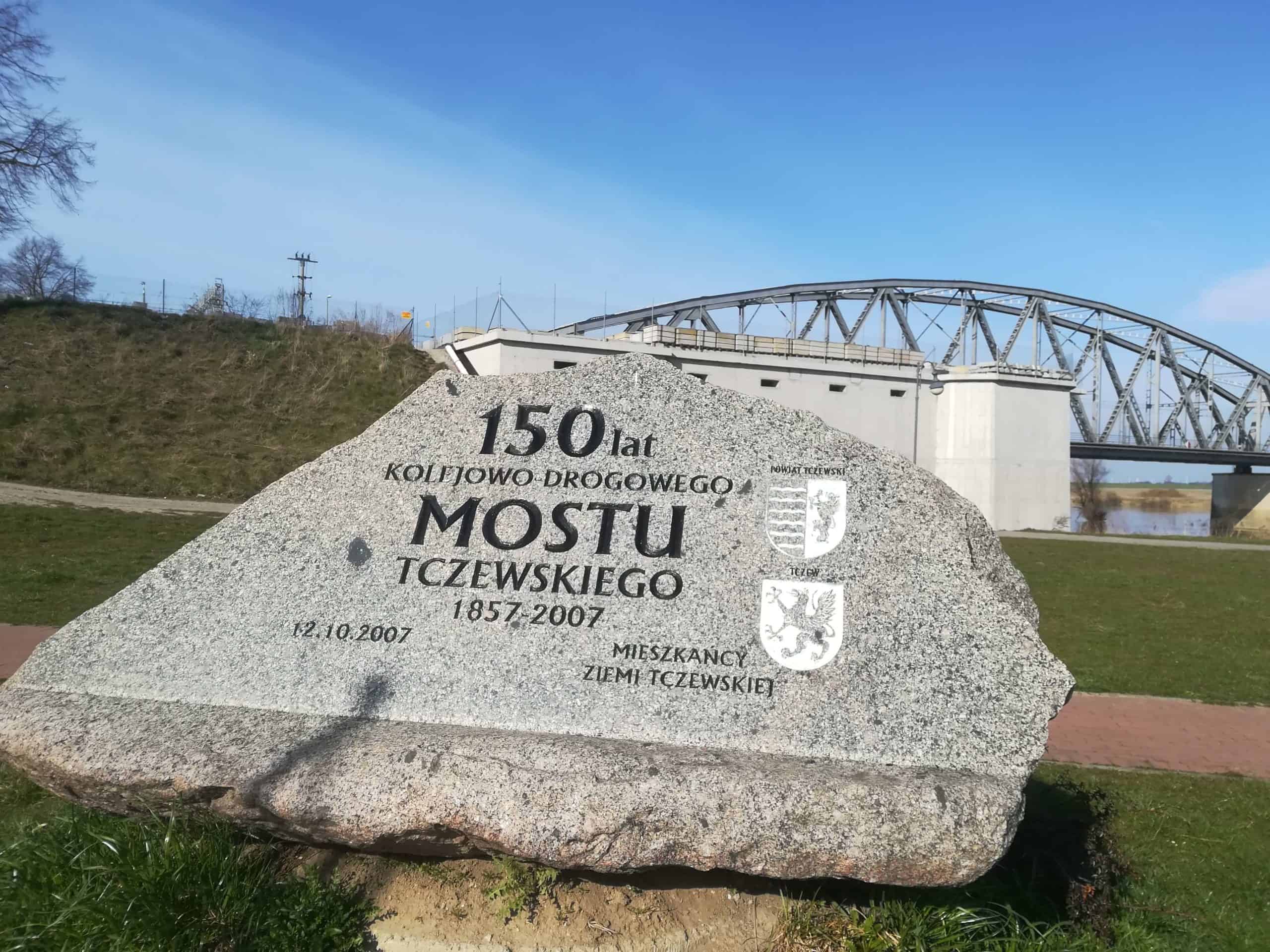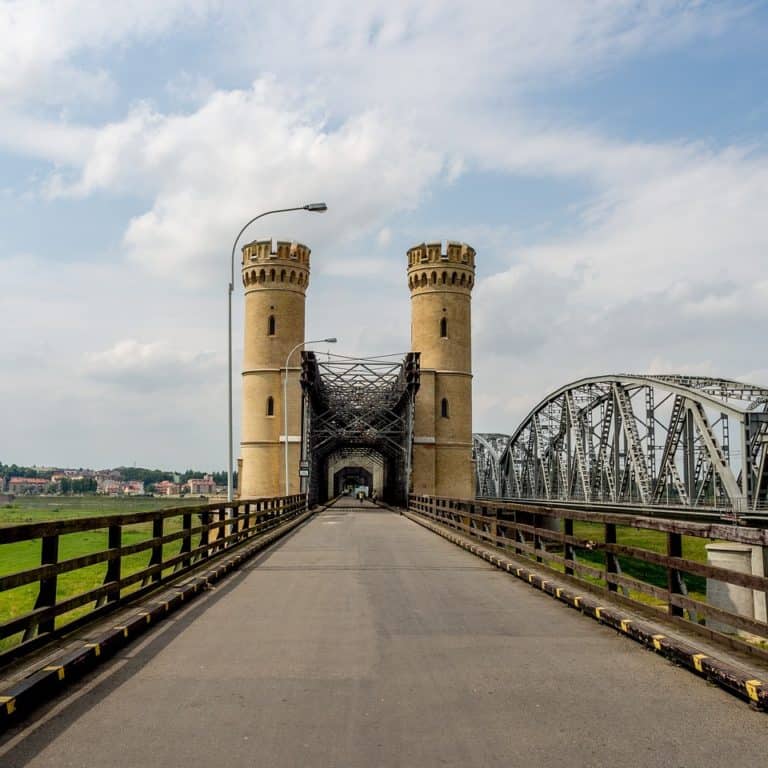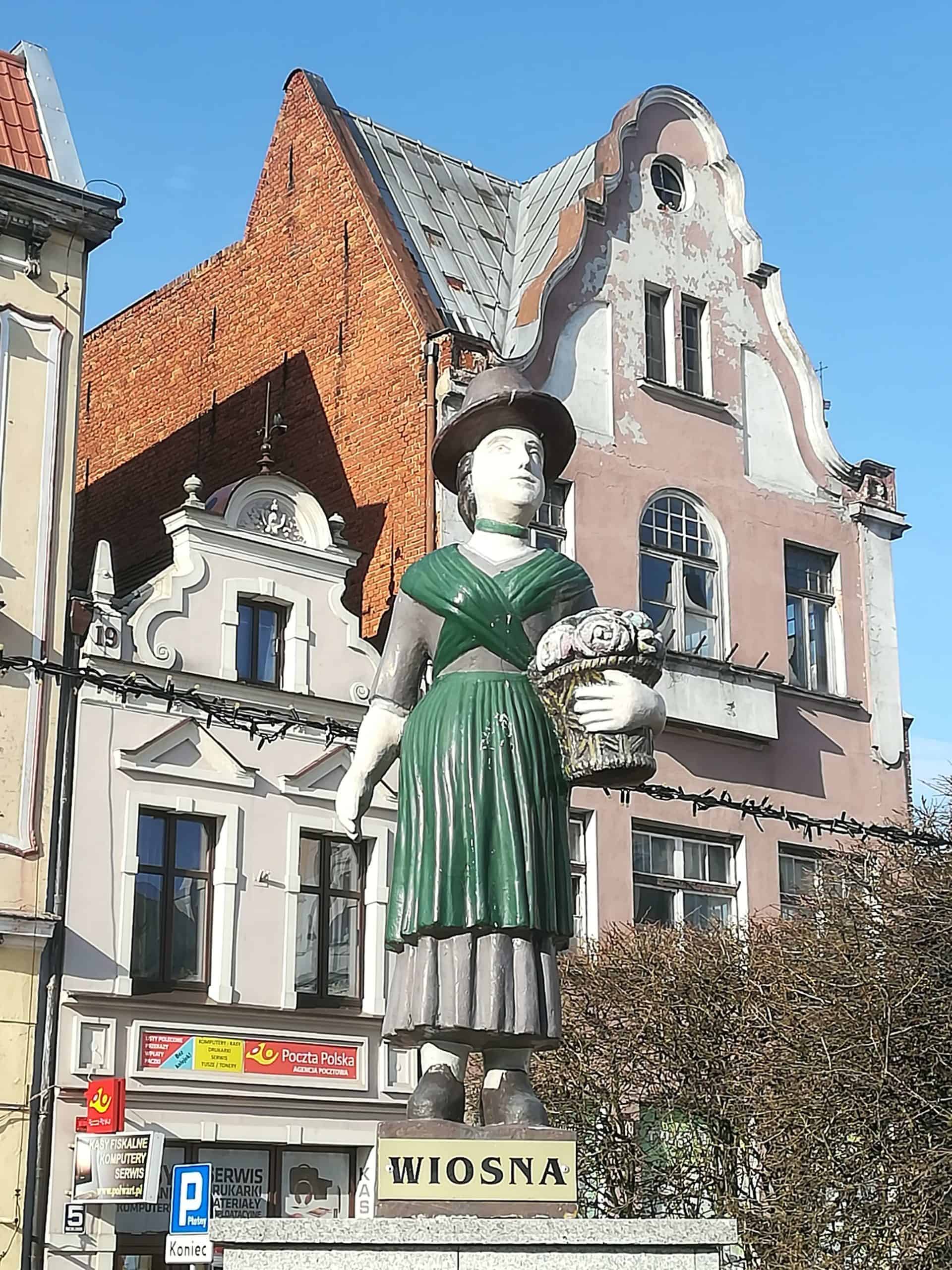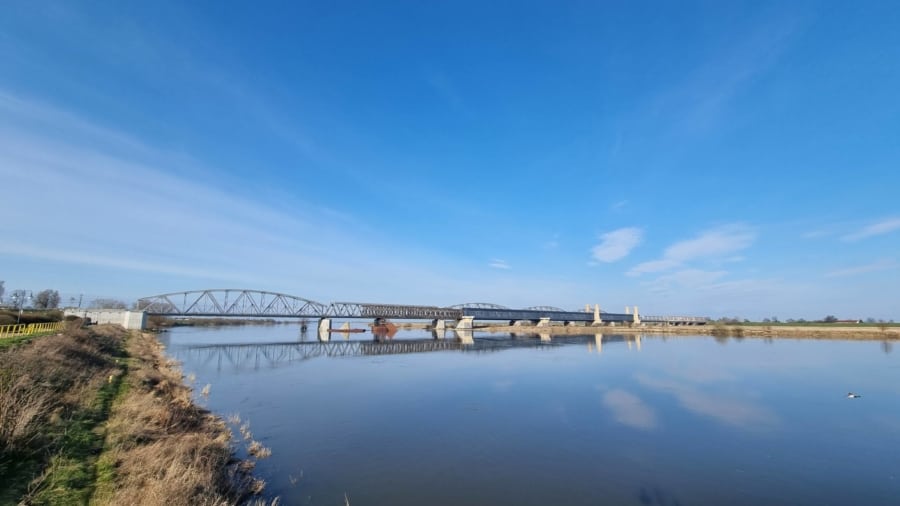It was on Easter Saturday – April 8 2023 – that my wife and I travelled the short distance by train from Gdańsk to the Pomeranian town of Tczew.
Despite the fact that the streets were dead and the majority of shops and cafes closed early for Easter, we did our best to make the most of our time in this historic town.
A little bit about Tczew
Tczew is a splendid town located on the Vistula River. Just half an hour away by train and car from Malbork Castle, Tczew makes a convenient stopover.
As well as being in Pomerania, Tczew is also in the smaller region known as Kociewie. Kociewie is an ethnocultural region which spreads west of the lower Vistula and is located between Tczew, Skarszewy, Stara Kiszewa, Czarna Woda and Świecie. The maximum extent of the area from north to south is 120 km, and from east to west around 60 km. Roughly 250,000 people inhabit the region. The biggest town in Kociewie is Tczew, while the cultural capital is Starogard Gdański.
Out and about in Tczew – Recommended things to see and do
I will now outline the best things to see and do in Tczew, beginning with something every visitor must see – the famous Tczew Bridge.
1. Tczew Bridge
Emerging from Tczew Railway Station, we immediately made our way on foot to Tczew Bridge (Most Tczewski). Fewer bridges in the world have as much history connected with them as this one.
Before the full extent of the bridge came into view, we came across an obelisk from 2007 commemorating the 150th anniversary of the bridge (commissioned for use in 1857):

Construction of the bridge began in 1851 in compliance with the design of German master builder and engineer, Carl Lentze. King Frederick William IV of Prussia laid the foundation stone in July 1851.
The six-span bridge with a total length of 837.88 metres, including the entry gates, was the longest girder bridge in Europe. For two years it was the longest bridge in the world. The original bridge became just a road crossing.
Out of ten turrets situated on the pillars, together with two located at each gate, only four remain. Friedrich August Stüler designed the turrets as neo-gothic decorative elements. Moreover, they assumed the function of being a defensive structure and support for the bridge, preventing the bridge axis from moving.


In 1888, construction began on a new double-track railway bridge, 40 metres from the first one. It was opened in 1891. At 837 metres long, the bridge had two entrance portals and six spans (each 129 metres long).
In 1912, both bridges were extended by almost 250 metres (in the direction of Lisewo Malborskie).
The fate of Tczew Bridge during the Second World War
On September 1, 1939, Polish soldiers blew up the bridges to prevent the Germans from taking them over. Along with Wieluń and Westerplatte, Tczew was among the first places in Poland to come under attack.
In October 1939, Germany, after a phase of temporary reconstruction, first restored rail and then road traffic.
After the War
The reconstruction of the bridge began immediately after the end of the Second World War.
At the end of 1947, a single-track railway bridge came into use, and in mid-January 1948, traffic resumed on the road bridge. When the 1960s arrived, some of the spans were replaced and the roadway was made. In 1971, a decision was made to complete the reconstruction of the railway bridge.
The 21st Century
In 2000, three surviving 19th-century spans and four towers were entered into the register of monuments. The entire bridge became a monument in 2016.
In 2011, traffic on the bridge was stopped due to the poor condition of the spans. The following year, renovation work began on the restoration of the towers and the spans.
The renovation of the Tczew Bridge came to a halt in 2019. As things stand, the bridge is only open to railway traffic. Pedestrians, cyclists and vehicle drivers are not able to use the bridge while construction work takes place.
2. Stroll along the Vistula River Boulevard
From the area of Tczew Bridge, the next most logical thing to do is to stroll along the Vistula River Boulevard. For cyclists, there’s a separate cycle path running down the entire length of the Vistula Boulevard
You will immediately notice several playground spaces for kids. There’s something here for kids of all ages.
Next stop – a splendid viewpoint of Tczew Bridge with an information board – ‘Most Tczewski z 1857 roku’. This contains some vital information about the construction of the bridge.
We reached the restaurant Panorama. There’s a small harbour in front of the restaurant.
We could have continued our riverside walk another half a kilometre or so to the end of the boulevard. Nevertheless, the main square was calling us. It’s just a five-minute walk from Panorama.
Perhaps it’s time you watched this movie which features our stroll by the river among other sights in Tczew:
3. Visit the Main Square
The Main Market Square in Tczew is called Plac Generała Józefa Hallera. Józef Haller was a lieutenant general of the Polish Army. During the First World War, he became commander of the Second Brigade of the Polish Legion.
The square’s townhouses are colourful enough. Frankly, though, my eyes were drawn to the four sculptures which decorate the top of the tenement house at ul. Hallera 8 on the eastern side of the square. Each character actually depicts a particular season of the year.
What’s more, every quarter, in the middle of the main square, the statue changes depending on which season it is. We visited Tczew in the spring, hence the Polish word for spring – wiosna – below the “Seasonal Statue” in the picture below:

The Best of the Rest in Tczew
There are a few other sights which should keep you occupied for a few more hours in Tczew:
4. Museum of the Vistula River
In 1984, the first museum in Poland dedicated to the history of the Vistula River was opened at building number 4 on 30 Stycznia Street.
The presented archaeological monuments document the old settlements and navigation of the Vistula River. Traditional tools, boats, ship models and mock-ups, supplemented with multimedia stations, allow you to learn the secrets of boatbuilding, and a great deal about trade, port construction and shipyards on the Vistula River.
The museum is open from 10am-4pm every day of the week.
5. Shipwreck Conservation Centre
Bordering the Vistula River Museum at Paderewskiego Street 24, you will find the Shipwreck Conservation Centre. This is one of the few places in Poland where you can learn about the techniques used to build old boats and ships. You will also become familiar with the history of Polish sailing here.
The Shipwreck Conservation Centre is open from 10am-4pm every day of the week.
Tczew – A Small Pomeranian Town
All in all, there are enough attractions in Tczew to keep you occupied for half a day. Check out this article for other things to see and do in Tczew. The same author, Jonny Blair, also wrote about his time in the town and lists plenty of more sights worth checking out in Tczew.
A Brief History of Tczew
The early days
In many sources, the earliest date associated with Tczew is 1198. It was then that Tczew was referred to as Trsow in a document by Pomeranian Duke Grzymisław. Grzymisław bestowed Tczew to the Knights Hospitaller – a medieval and early modern Catholic military order.
Moving forward to around 1200. Sambor I, Duke of Pomerania, constructed a fortress in the town. By 1252, the settlement was known by the names Tczew and Dirschau.
In 1258, a city council was formed. Two years later, in 1260, Tczew was granted town rights.
In 1289, Duke Mestwin II brought the Dominican Order to the city. It was part of Poland until 1308 when the city found itself in the hands of the Teutonic Order. In 1309, Tczew was purchased from Brandenburg by officer Heinrich von Plötzke of the Teutonic Knights. This was despite the fact that Brandenburg’s early claims to the region were of questionable legality
After the Battle of Grunwald in 1410, Tczew briefly fell into Polish hands. However, when the First Peace Treaty of Thorn (now Toruń) was concluded on February 1, 1411, the town remained within the borders of the Order’s state. Tczew was reincorporated into Poland after the Second Peace Treaty of Thorn in 1466.
Tczew in the modern era
The majority of the town’s inhabitants converted to Lutheranism during the Protestant Reformation. In 1626, King Gustav II Adolf of Sweden occupied the town. King Gustav had a pontoon bridge built across the River Vistula. When the war ended, Tczew Polish King Władysław IV Vasa visited the town twice in the 1630s. Even though the town was rebuilt, it suffered heavily during the Polish-Swedish Wars. In a nearby battle on 2 September 1657, the combined troops of Brandenburg and Sweden defeated the Poles.
The Kingdom of Prussia annexed the region from the Polish-Lithuanian Commonwealth during the First Partition of Poland in 1772. Tczew, known then as Dirschau, became part of the newly-established Province of West Prussia.
Moving on to the Napoleonic Wars and the Polish national liberation fights, Polish troops took over the town in 1807. However, it fell into the hands of Prussia again in 1815.
Tczew became part of the German Empire in 1871. From 1887, it was the capital of the Dirschau district in the Province of West Prussia.
After the First World War, Poland regained independence and Tczew became a Polish city. The official handover took place on January 10, 1920. On January 30, Polish General Józef Haller arrived in the town with his troops.
World War II had a devastating impact on Tczew. The town was one of the most damaged cities in the region.
FAQ
How long does it take to get from Gdańsk Central Railway Station to Tczew by train?
The train journey from Gdańsk to Tczew takes between 14 and 37 minutes depending on which train operator you use.
Which train services go from Gdańsk Central Railway Station to Tczew?
TLK, Intercity (IC) and Express InterCity (EIP) train services all go from Gdańsk to Tczew. These services belong to Polish State Railways (PKP) – the dominant railway operator in Poland.
Moreover, Polregio trains run between Gdańsk and Tczew. It is cheaper to travel by Polregio than the PKP trains, though the services are generally slower than those run by PKP.

